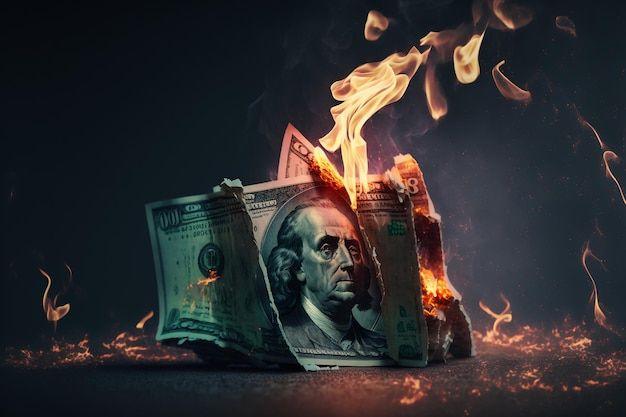
1948 was the year of the dollar's absolute dominance, and it continued to grow until countries began courting America by pegging their currencies to it, while other countries concluded agreements with specific baskets to indirectly denominate them in the dollar. The losers were the countries that rejected the dollar and whose currencies lived in isolation from it, namely a group of socialist countries and unions. We are not talking here about the strength or weakness of currencies, but rather about stability against the dollar. The dollar's strength increased in 1971 when US President Nixon broke the dollar's link to gold. Since then, the dollar has reigned supreme, and no currency has reached the level of the dollar's replacement for gold. This happened for several reasons, the most prominent of which we will mention, along with what is happening now, specifically (BRICS, China, Russia, cryptocurrencies), and whether what is happening will affect the dollar's strength or not:
First: The power of the country issuing the dollar. There is no person who does not acknowledge the unique and globally influential financial power of the United States in the financial markets, even at the height of the Soviet Union’s power. However, what happened in the nineties of the last century, from the beginning of the emergence of the modern Chinese economy and its development to what we see today, a conflict that may reach economic parity between the two countries. Some analysts may favor one side over the other, which makes some of them see the inevitability of the dollar’s influence due to the close connection between the dollar and the American and global economy. Money and the economy are two wings of a bird.
Second: Global connectivity. The dollar was one of the pillars of the single village, which enabled American companies to be more transcontinental than others. Although the global system (SWIFT) is based in Belgium and 11,507 financial institutions from 209 countries participate in it, it is known that its main driver is the United States of America, whose financial institutions occupy the highest share of participation in it.
This system is the backbone of the dollar's lifeline. Since the economic blockade imposed on it due to the war in Ukraine, Russia has sought to strengthen its messaging system (SPSF). This was a bold attempt, however, resulting in the accession of 177 institutions from only 24 countries, a number that cannot be compared to competition. To date, BRICS has not taken any practical steps to establish an alternative to SWIFT. As for the main driver of BRICS, I mean China, its alternative system (CHIPS), although it has 148 countries dealing with it, upon closer examination, we find that the number of financial institutions dealing directly does not exceed 80, and those dealing indirectly are only 1,357. Furthermore, the number of transmissions does not reach 20% of SWIFT transmissions. This clearly reveals the magnitude of the gap between the Chinese and Russian systems, and SWIFT's dominance over them.
However, what worries America is that when China leaps, it reaches unimaginable heights in its secret and unannounced leaps. China may surprise us with a unique messaging system based on technologies that attract countries and financial institutions. If we examine the dazzling Chinese success in TikTok and how it was able to outperform its historically entrenched American counterparts within only two years of its establishment, we should understand this fear. As long as China has begun to pay attention to this aspect, it is impossible to predict the limits to which the Chinese legislator and its purely financial vision may reach. Recent years have demonstrated that the Chinese legislator has greatly conceded the principles of financial and economic communism.
Third: The guarantor and the reference
As we mentioned, currencies were deprived of gold and no longer had any guarantee. Therefore, the strength of the currency became dependent on the strength of its issuing central bank. The strongest and most reliable central bank at the present time is the US Federal Reserve, which is led by the Federal Reserve System, which was established in 1913.
This power is what digital currencies lack. No matter how high the price of Bitcoin or other digital currencies, the missing guarantor and reference feature makes them, to date, unable to withstand the dollar. However, the digital monetary transition may be inevitable, according to the data and the race of countries, led by the United States, to codify and legislate systems for issuing or supporting reliable digital currencies. However, it appears that the current economic conflict between China and the United States will delay this aspiration for several years unless one of the two poles sees it as a safe haven to attract countries and as an alternative to SWIFT.
China has hinted at this several times, and it was the main reason President Trump adopted and supported Bitcoin during his last presidential campaign.
From here, it is clear that short-term data provide a positive indicator for the dollar. However, the US public debt reaching $35 trillion by the end of 2024 and its terrifying leaps, with the International Monetary Fund predicting it will reach 109.5% of GDP by 2029. This forecast and monitoring of the public debt were made before the current economic events and the state of tension between the US and China. This makes the possibility of the dollar losing its absolute dominance within two years from now plausible and logical, unless President Trump's policy of curbing Chinese ambitions in 2025 succeeds. Will he succeed in doing so?


